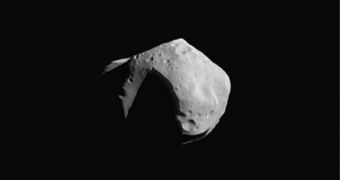According to a new document released on January 22 by the US National Academy of Sciences (NAS), our planet is still poorly defended in the case of an impending asteroid or meteorite impact. The report suggests that the United States and other countries with important space abilities should do more to safeguard Earth from the threat of space rocks than simply prepare some nuclear bombs for fast deployment. The paper also suggests that the goal the Congress established in 2005, of establishing the major near-Earth objects (NEO) that could threaten us, cannot be met with the $4 million a year funding that NASA currently gets for the job.
The NASA investigators also reveal that less than $1 million is currently being invested in measures such as researching viable ways of producing defense measures that would avoid a potentially catastrophic impact. Deflection technologies and spacecrafts capable of altering the course of a NEO are very likely to cost a great deal of money, the document goes on to say, but scientists don't even have blueprints of such devices yet, and the situation is very likely to endure for the foreseeable future. The preliminary version of this report was released in August 2009, and entitled “Defending the Earth: Near-Earth Object Surveys and Hazard-Mitigation Strategies.”
It showed that the orders set forth by Congress more than five years ago would not be met with current funding. NASA is under strict orders to identify and catalog all NEO that have a diameter of 460 feet (140 meters) or larger, but the space agency appears to be ill-equipped to discover about 90 percent of them, the final version of the official document states. The experts behind it go on to say that early warnings are the best possible way of protecting the planet from a catastrophic impact. If we learn of an incoming asteroid less than a year before it hits, then our chances of survival diminish rapidly.
Conversely, knowing about such an event years in advance would give researchers and engineers sufficient time to work together and develop innovative ways of preventing collisions. The NASA NEO program manager, Lindley Johnson, said recently that the space agency requires at least $1 billion in funding over the next 15 years, in order to be able to determine the locations and trajectories of all space rocks that may collide with Earth, as instructed by the Congress. However, that seems unlikely to happen, seeing how neither Bush nor Obama even considered setting aside money for this line of investigation, Space reports.

 14 DAY TRIAL //
14 DAY TRIAL //